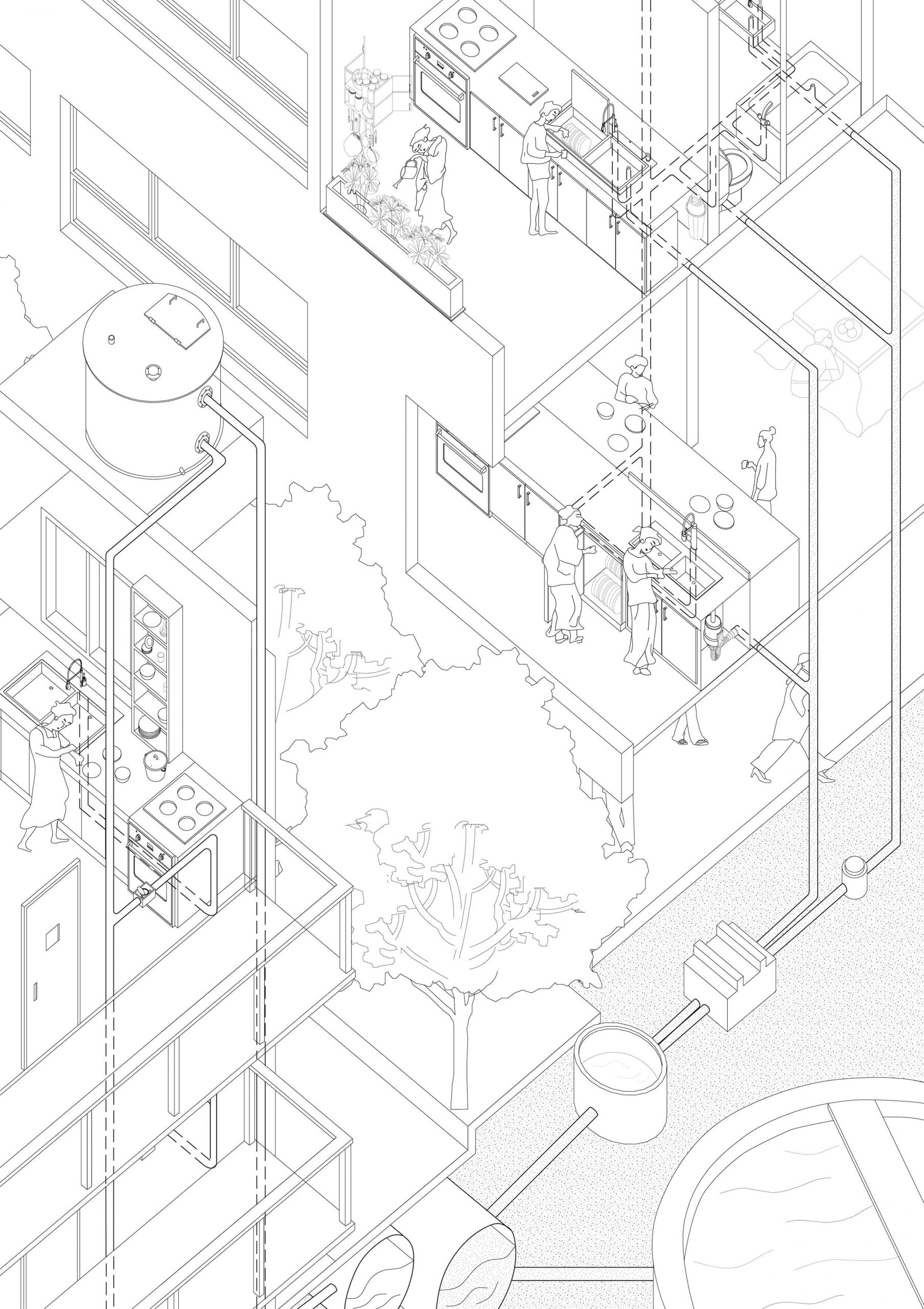While the shape and function of the sink has remained largely similar throughout its modernization, as a network it has greatly changed through time, perhaps most tangibly expressed in the reduction of the visibility of water in Japanese daily life. Even though water-supply systems were introduced within cities in the Edo Period, daily water management still entailed close human interactions: guarding the water source, lifting water from the well, common laundry activities, etc. Although the widespread introduction of underground water-piping systems and pumps after World War Two enabled the direct delivery of water to individual apartments, wastewater still remained open and thus visible. Further improvements in the closing decades of the twentieth century, in the form of pressure pumps, facilitated universal direct supply, even to multistory buildings. At the same time, grey water and black water are now systematically transported to treatment plants through a sewage system, hidden from sight, before being fed back into rivers or the sea.
Student: Kai Yeo Wen
Balcony
The balcony extends the private realm to the outside and at the same time introduces aspects of the public realm into the intimacy of the apartment. This ambiguity is reflected, and even amplified, by the behavior of the inhabitants, who either appropriate the balcony as a space of inhabitation or, on the contrary, use it as a public stage. Similarly a privately owned place, its use is regulated in Japan by provisions, determining the possible activities that can take place or not on it. Triggered by the balcony’s status as a threshold space, users can easily exploit this ambiguity for transgressions, simultaneously revealing the ambivalent spatial status of this building element.
